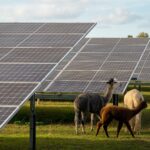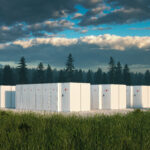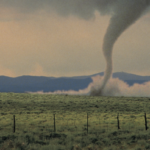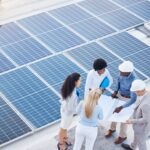As a Director of Land Acquisition at Scout Land Consultants, Lawton Barnwell has had dozens of conversations with landowners who are leasing their acreage for solar development. He’s answered countless questions, but a few come up over and over, specifically regarding the technical aspects of the project.
How does a solar development connect to the power grid? Where does the power go and how does it affect my community? As a solar farmer, does that mean I receive free electricity? In short, how does solar power transmission really work? Lawton and the Scout Land Consultants team answer these questions and more.
How Does a Solar Development Connect to the Grid?
One of the considerations for whether a property is suitable for solar development is its proximity to a substation. Large (transmission or utility scale) projects connect by either connecting to a substation or tapping into a transmission line (69 kV or higher). If there’s no substation near enough to the project, the developer will build one. The substation will eventually belong to the local utility after the project is complete, 30 to 40 years from now, becoming part of the permanent electrical grid infrastructure.
Transmission lines transport power over distance; transformers “step up” or “step down” the voltage as it goes from a source to the transmission line and back down to the 120 volts needed for customers’ homes.
Smaller (community scale or distributed generation “DG”) projects generally connect to distribution lines, which are the same as transmission lines but move electricity at a much lower voltage. They step up voltage in three phases to connect to a transmission line. A distribution or “3 phase” line must be within one mile of the solar property to make connection cost-effective.
Where Does the Power from my Development Go? Who Buys It?
Generally, transmission-level developments move power to the nearest large metropolitan area. The power enters the grid and is purchased by the local utility or by large companies for renewable energy credits. Renewable energy credits allow companies to claim the “renewable” aspect of the electricity and say that a certain percentage of their electricity use came from a renewable source.
Community-level projects’ output stays local; it’s purchased by the local utility to be sold to its local consumers or electrical cooperatives, which sell mostly to residential customers. Local utility customers also have the option to subscribe to green energy programs. For a small monthly subscription, the utility or a third party firm works with solar farms to ensure that the electricity the subscriber’s home uses is replenished on the grid with clean, renewable energy.
Since I’m a Solar Farmer, Can I Get Energy from my Farm at No Cost?
The short answer is, unfortunately, no. Before solar development is under construction, every volt of the electricity generated is under contract from the utility. The Power Purchase Agreement doesn’t allow for any single-user connections, even for the landowner.
It can be complicated to get into solar development, but it helps to partner with a company with expertise in the field. Scout Land Consultants helps inform landowners of the potential for their property and connects them with developers who can maximize its value. Acting as a mediator between developers and landowners, we work to integrate solar development, benefiting not only those directly involved but also the environment and communities served.
If you’re wondering whether your property is suitable for solar development, take our solar quiz or connect with our team to receive a complimentary site evaluation.






